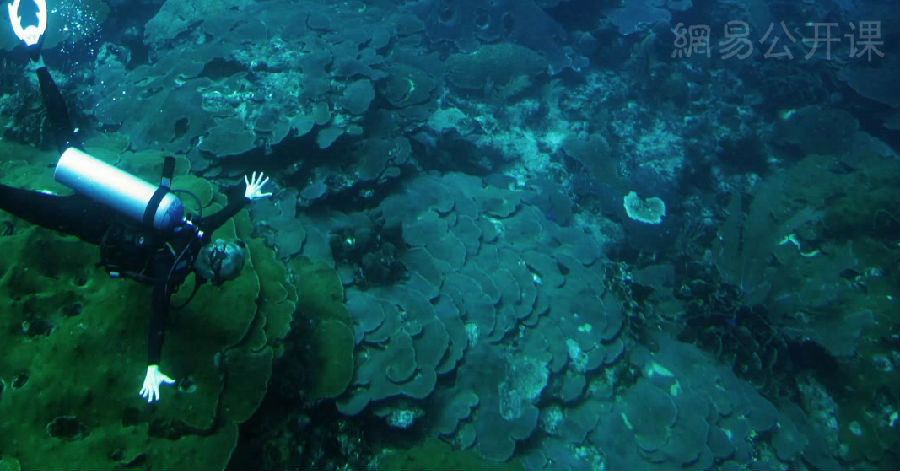The second time I cried underwater was on the north shore of Curaao, 2011.
我第二次在水下哭泣是2011年在库拉索岛的北岸。
It was the calmest day of the year, but it's always pretty sketchy diving there.
在一个风平浪静的日子,不过在那里潜水一直是非常草率的。
My boyfriend and I swam against the waves. I watched my compass so we could find our way back out, and he watched for sharks,
我和男友逆着海浪游着。我负责看着罗盘以确保我们能回来,他负责看有没有鲨鱼,
and after 20 minutes of swimming that felt like an hour, we finally dropped down to the reef,
经过了20分钟的游泳,感觉像游了一个小时,我们终于下潜到了珊瑚礁,
and I was so shocked, and I was so happy that my eyes filled with tears. There were corals 1,000 years old lined up one after another.
我被震惊了,我高兴到泪水在我的眼睛里打转。那些活了一千年之久的珊瑚,一个一个连成一片。
They had survived the entire history of European colonialism in the Caribbean, and for centuries before that.
它们在加勒比海经历了欧洲大殖民时期并活了下来,在那之前已经活了几个世纪。

I never knew what a coral could do when it was given a chance to thrive.
我永远不知道珊瑚生命力多旺盛直到它们有了一个繁荣的机会。
The truth is that even as we lose so many corals, even as we go through this massive coral die-off, some reefs will survive.
真相是即使我们损失如此多的珊瑚,甚至像我们正在经历的如此大面积的珊瑚死亡,会有一些珊瑚重新繁荣起来。
Some will be ragged on the edge, some will be beautiful. And by protecting shorelines and giving us food to eat and supporting tourism,
有些残喘的活在边边角角,有些会非常美丽。并且保护海岸线还能够增加渔业资源,促进旅游业发展,
they will still be worth billions and billions of dollars a year.
依然能够带来每年数十亿的财富。
The best time to protect a reef was 50 years ago, but the second-best time is right now.
保护珊瑚礁最好的时间是在50年前,而第二个最佳时刻就是现在。
Even as we go through bleaching events, more frequent and in more places, some corals will be able to recover.
即使我们已经经历了白化事件,即使面积更广,更加频繁,有些珊瑚是可以恢复的。












